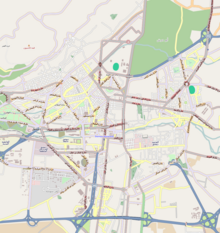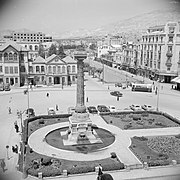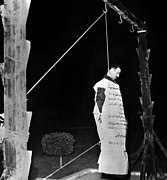Marjeh Square
| Martyrs' Square ساحة الشهداء | |
 The square and the Yalbugha Mosque | |
| Coordinates | 33°30′46″N 36°17′53″E / 33.5128°N 36.2980°E |
|---|---|
| Construction | |
| Completion | late nineteenth century |
Marjeh Square (Arabic: ساحة المرجة, romanized: sāḥat al-Marjah), also known as "Martyrs' Square" (ساحة الشهداء sāḥat ash-Shuhadā’), is a square in central Damascus, Syria, just outside the walls of the old city. The Syrian Interior Ministry has its headquarters in the square.
History
[edit]The square was built by the Ottomans in the late nineteenth century. A new post office and municipality were built there using steel and cement, new materials for Damascus at that time.[1] The Ottomans publicly executed seven Syrian national activists in the square on Martyrs' Day, 6 May 1916, and it is for this reason known as "Martyrs' Square". After the French took control of Syria they continued to use the square for the same purpose. Fakhri Hassan al-Kharrat, son of the Great Syrian Revolt leader Hasan al-Kharrat, was hanged there in 1925–26.[2] On 18 May 1965, Israeli spy Eli Cohen was publicly hanged in Marjeh Square.[3]
- The Post Office building in Marjeh Square in 1890
- Public hanging in Marjeh Square during the Arab Revolt in 1916–1918
- The Telegraph Column in 1950
- Eli Cohen publicly hanged in Marjeh Square on 18 May 1965
- Marjeh Square in 2009
References
[edit]- ^ Faedah M. Totah (2014). Preserving the old city of Damascus. Syracuse, NY: Syracuse University Press. ISBN 9780815652625. p. 41.
- ^ Sami M. Moubayed (2006). Steel & silk: men and women who shaped Syria 1900-2000. Seattle, WA: Cune. ISBN 9781885942418. p. 359.
- ^ Thomas, Gordon: Gideon's Spies: The Secret History of the Mossad


 French
French Deutsch
Deutsch




